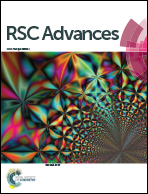Effect of flameless catalytic infrared treatment on rancidity and bioactive compounds in wheat germ oil
Abstract
Flameless catalytic infrared (FCIR) technology was used to inhibit lipase and lipoxygenase activities of wheat germ (WG) in this study to extend its shelf life. Moreover, the influence of FCIR heating on some quality characteristics of wheat germ oil was assessed. Results reflect that FCIR treatment could effectively decrease the water activity (Aw) and exert a damping effect on lipase and lipoxygenase activities of WG within a short time. The WG sample heated 35 cm below the emitter for 6 min with FCIR obtained an excellent stabilization effect. Under this condition, the residual water content and Aw were 3.18% and 0.186, respectively, and the corresponding relative lipase and lipoxygenase activities were 7.94% and 14.33%, respectively. The free fatty acid content and peroxide value of this WG sample at 40 °C remained below 4.65% and 3.15 meq. O2 per kg WGO respectively for 60 days. The optimal Aw for WG storage is about 0.186. No significant change in main fatty acid but a significant decrease in tocopherol content and oxidative stability was observed when compared to raw WGO. In addition, no significant darkening was observed in WGO extracted from all treated WG samples.


 Please wait while we load your content...
Please wait while we load your content...